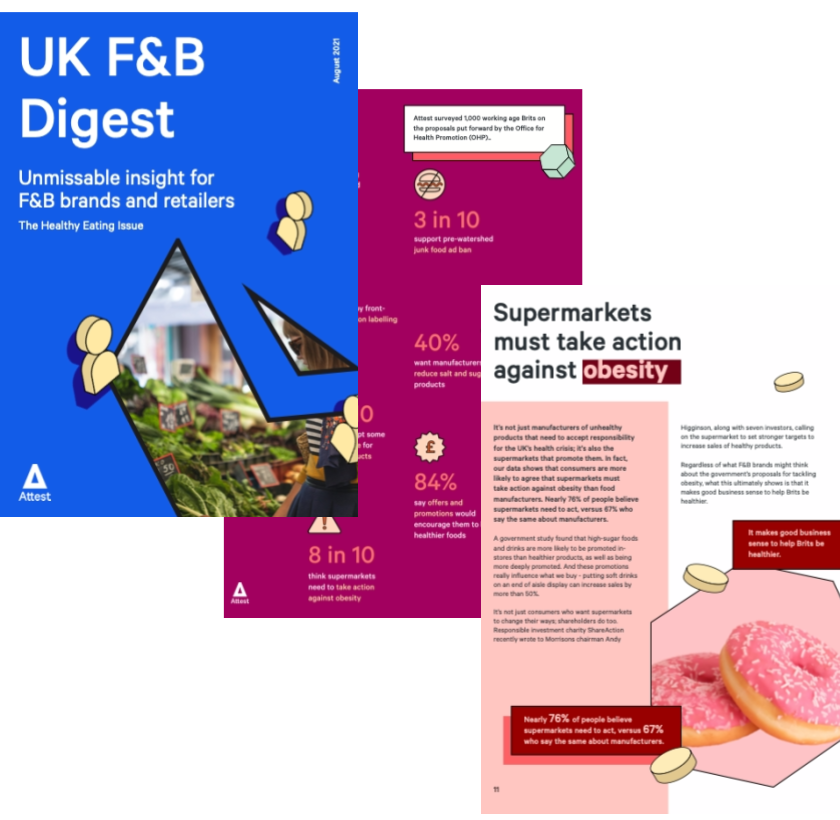Mallow & Marsh on how F&B brands can take on HFSS and win
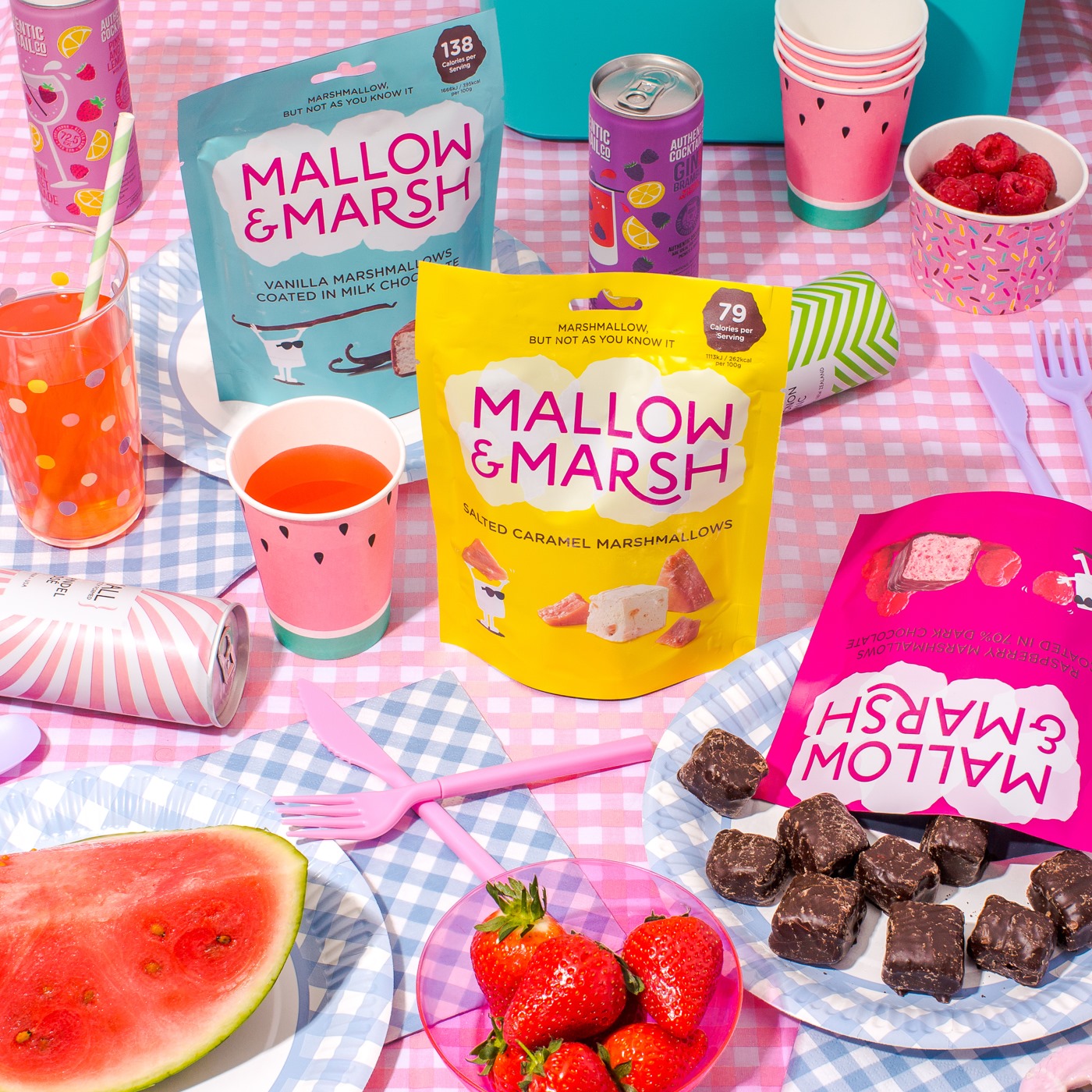
Mallow & Marsh's National Account Manager Becky Home shares the brand's approach to reformulating, discounting, promotions and portion control.
As a premium confectionary brand, Mallow & Marsh are facing the UK government’s reforms for high fat, salt and sugar (HFSS) foods head on. Although the changes coming the way of F&B brands in 2022 may seem daunting, Mallow & Marsh believe they will bring lots of positives.
Becky Home, National Account Manager at Mallow & Marsh spoke to Attest’s Head of Content Sarah Hollinshead about how brands can evolve and adapt to the HFSS crackdown at the Digital Food and Beverage EU conference. You can watch the full session here or read the highlights below…
How have you seen consumer attitudes on health change recently, especially since the pandemic?
Lots of people have tried to eat healthier because of COVID-19 and I think there’s definitely been a shift into what we’re putting into our bodies; is there anything artificial? Where has it been made? Is the packaging recyclable? But I think when people are stressed and times are uncertain, they tend to snack more.
If you take a look at the products that have launched this year, it’s a lot around the calorie message. For example, Mars ‘under a hundred calories’, and I think calorie and portion control is here to stay. But, for me, it will be really important to see in the consumer surveys we do with Attest what happens moving forward. Because I think, in reality, people are saying they want to eat more healthily, but they’re not actually doing what they say.
People are saying they want to eat more healthily, but they’re not actually doing what they say.
How much does that influence your strategy at Mallow & Marsh, as snacking must be so integral to the amount of products you’re selling?
Snacking is really important to us, but what’s also really important is being transparent. So yes, we have calories front-of-pack, but our first and foremost mission is we’re premium confectionery. You eat Mallow & Marsh to have a tasty and indulgent treat and, actually, the fact that we’re better for you than maybe a Mars bar is fantastic. That’s the added benefit. But for us moving forward, it’s all about transparency, portion control and allowing people to make smart decisions about what they’re snacking on.
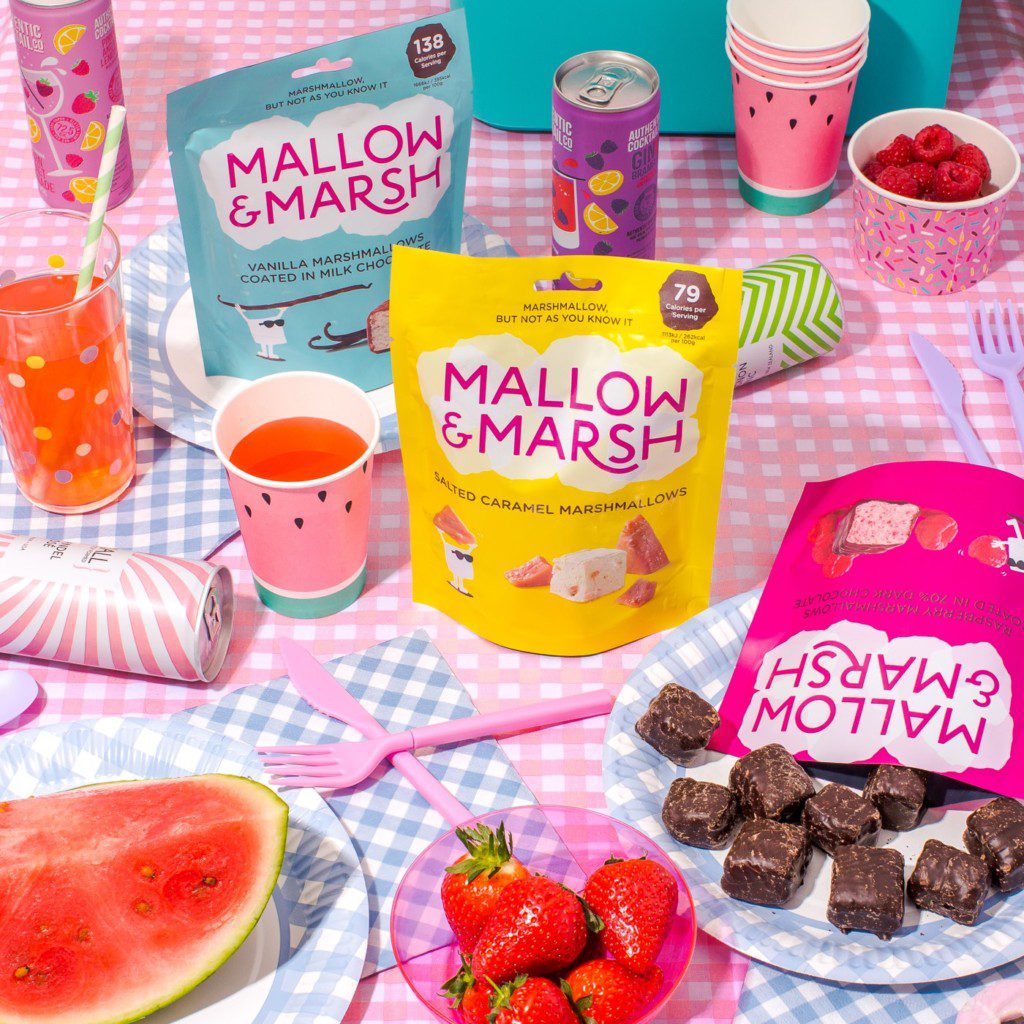
We don’t want to be demonizing people for having a treat. It’s just allowing them to feel like they’re making an informed decision about it, right?
Absolutely. If we want to eat a Mars bar, we know what we’re eating, it’s a traditional confec and it’s also more affordable. And I think we need to come back to what our Attest surveys have told us – people are motivated by price first and foremost and we can’t forget that. So it can’t just be about just healthy eating, it’s also about the affordability.
It would be interesting to hear your thoughts around pricing and promotions. As a premium offer, how do you position yourself there? Are there any other barriers to healthy eating?
I think promotions are a great example because if we look at each of HFSS categories, we see very deep deals; half price, sometimes better than half price. If you take sugar confectionery, it’s ‘buy five for a pound’. So really and truly we’re encouraging consumers to buy more than they actually need to. Whereas if we look at the healthier food categories, we see very shallow deals that aren’t always front-of-store. They’re not always on gondola ends. I think there’s an education piece as to how we can eat healthily on a budget. Following findings from our Attest studies, we had a really interesting conversation about people in very deprived areas that only have microwaves to cook with. How are we supporting them to eat healthier, for example?
Really and truly, we’re encouraging consumers to buy more than they need to.
I think we need to balance HFSS promotions. Is it just asking people to switch out of buying, you know, Cadbury’s Buttons every day and into buying something a bit healthier or is it asking them to really review how often they eat it? We’d rather people ate Mallow & Marsh three, four times a week and really enjoyed it, but they’ve eaten us as a portion control. We’re not expecting them to eat us every single day. So, for us, it’s how can we work with people to change mindsets? But I think it’s a difficult one because we know that HFSS categories drive volume. We know that ‘five for a pound’ is what hits the buyer’s bottom line.
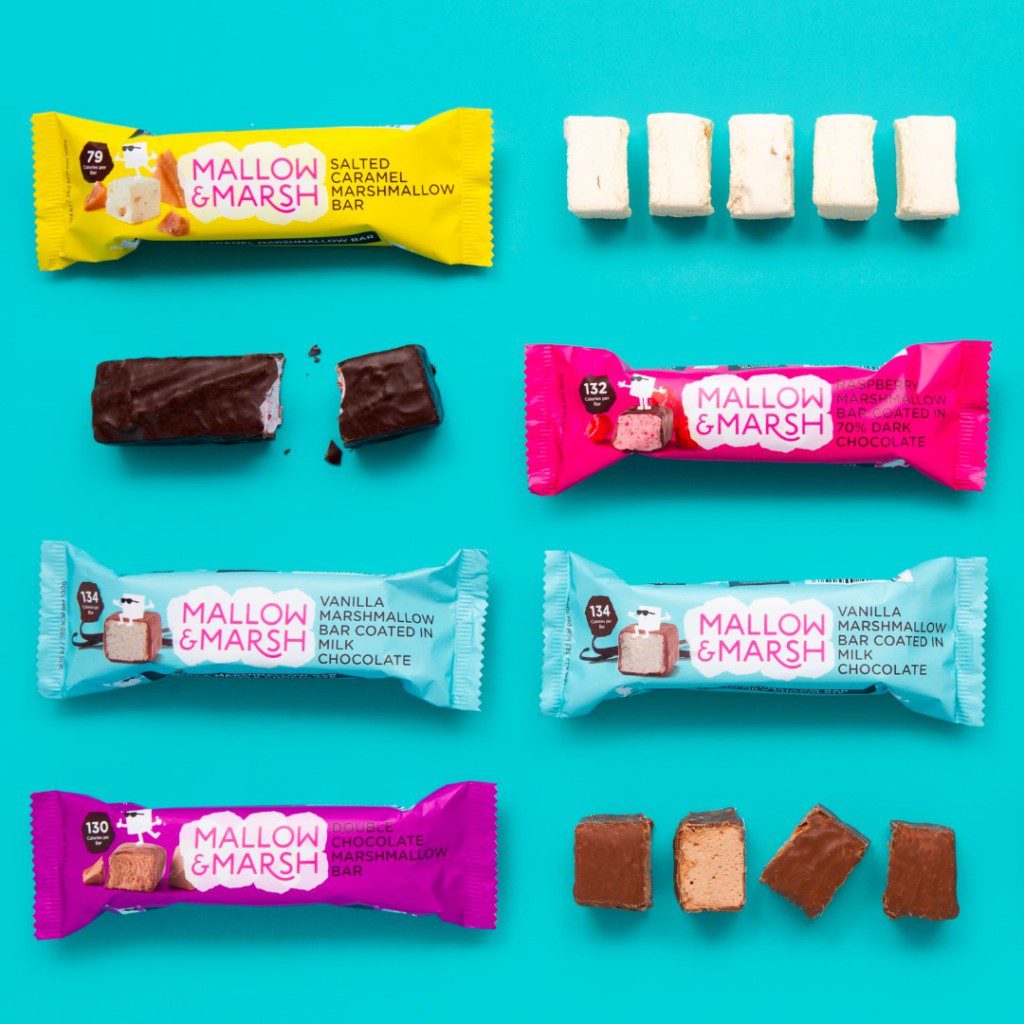
We’re putting a lot of onus on the consumer to be making more conscious decisions. Do we feel like we’re coming to the end of impulse buying?
A lot of what’s in the queuing systems now in the supermarket is very different from what it was a few years ago. You’ve still got your traditional confec, but there are a lot of products with calories front-of-pack, low fat, low sugar, low salt. And, actually, if you stand in the queuing system, you see people are looking back-of-pack, front-of-pack. But I wouldn’t say we’re necessarily all the way there. If you’re on a budget, you don’t have the luxury to be able to afford the slightly more expensive healthier version. That’s something that we’ll all want to tackle.
In terms of the government proposals for HFSS, Attest data shows that making healthy food more affordable has the most consumer support. Forcing manufacturers to reduce salt and sugar content in their products is supported by 40% of people, while taxing unhealthy foods is least popular. What’s your take on these stats and how are Mallow & Marsh approaching HFSS regulation?
They’re so interesting. We see that only 26% of people want HFSS food and drink taxed. I think that’s just a great example that the sugar drinks tax maybe hasn’t worked as well as we would’ve liked because I don’t think people have noticed that Coke is a couple of pence more expensive than Diet Coke.
HFSS is not easy, it’s very difficult, but we’re open and honest about who we are and reformulation isn’t within our plan. When people go down the confectionery aisle, they want to indulge. People tell us we taste great, so we wouldn’t want to reformulate because we don’t want to compromise on that taste.
Reformulation is quite a big jump to make without knowing what your consumer think.
We’re probably one of the only confec brands within the pouch area that’s got calories front-of-pack. What we’re saying is, we’re allowing you to make an informed decision. We know marshmallows are made with sugar, everyone does, we’re not lying to you about that. We’ve always been proud of who we are and where we come from.
I think it’s harder for the brands that are maybe on the blurred line of kind of healthy, kind of not healthy. Do they reformulate? Do they not reformulate? Are people willing to accept change in tastes? Attest is really helpful to do a bit more digging because I think it’s quite a big jump to make without knowing what your consumers think.

44% of people claim that they find nutrition labels confusing to the point where 14% don’t even bother looking anymore. This seems like a huge space for the industry to go to?
Absolutely. We’re not just saying to people you cannot ever eat chocolate, crisps or HFSS products ever again. But what we need to tell them is, there might be an alternative that has 50% less sugar. Why don’t you try that one? Or if you want to eat the one that has the 50% extra sugar, that’s fine, but they’re informed. And so I think labelling is a really interesting topic. Is there more that we can do at shelf? It’s not just about the draconian measures of saying no ads between 6-9 PM, it’s the wider education piece that we’re all really on board with.
What is good collaboration here between retailers and brands and other organisations?
As a brand, we absolutely have a role to play in HFSS and to ensure we’re transparent and we help educate the customer, but the supermarkets have a much larger share of voice. So what can supermarkets do? Is it altering the traffic light system? Is it having barkers on shelf to call out products that aren’t HFSS or call out the alternatives that are better for you? Is it creating a ‘better for you’ section within the HFSS products that pulls those products together? It’s all about how we can give consumers as much knowledge and info as possible to make educated and informed decisions.
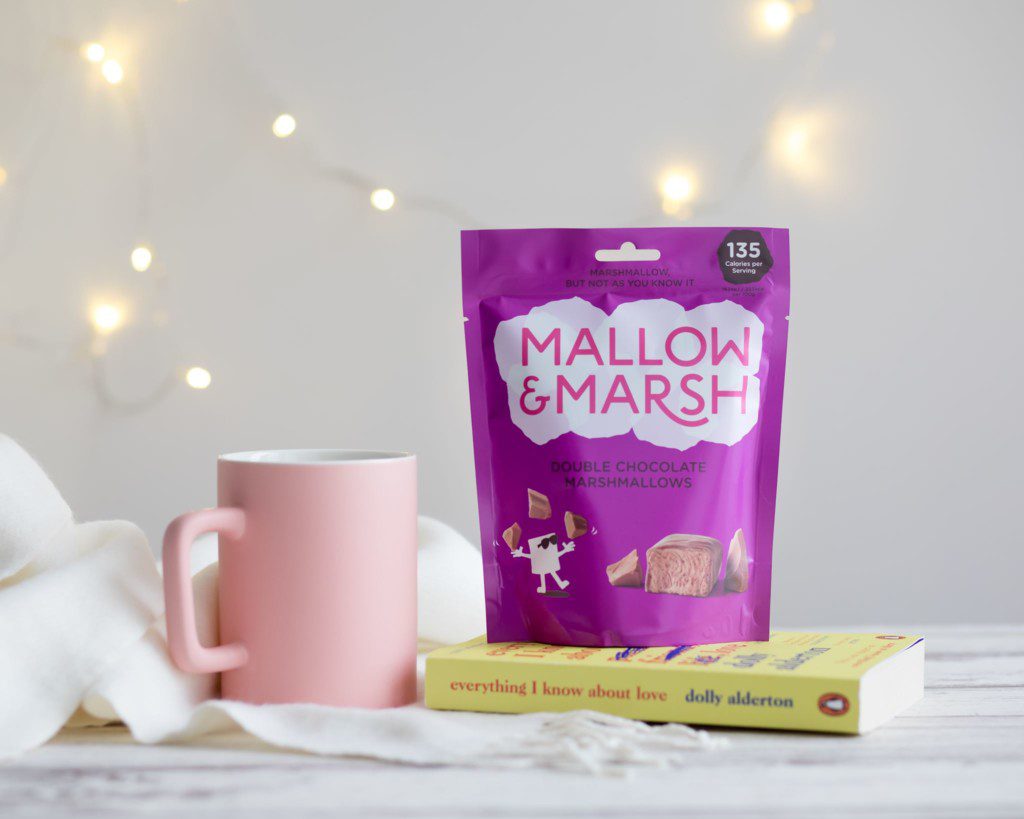
What would be your advice for other food and beverage brands that are trying to navigate the regulation at the moment?
For us as a smaller beverage brand – as I’m sure the larger brands have got huge teams working on it – it’s about gaining real clarity. We’re really trying to talk to our retailers early on to understand what the impact is, as well as what the opportunities are. How can we try and work with our retailers to create hotspots in-aisle? So, look at how you can work with the retailers to solve some of their problems because, ultimately, we’re all in it together.
Want to find out more about F&B consumer trends?
Download our food and beverage report for the latest industry insights.
Tell us what you think of this article by leaving a comment on LinkedIn.
Or share it on:

